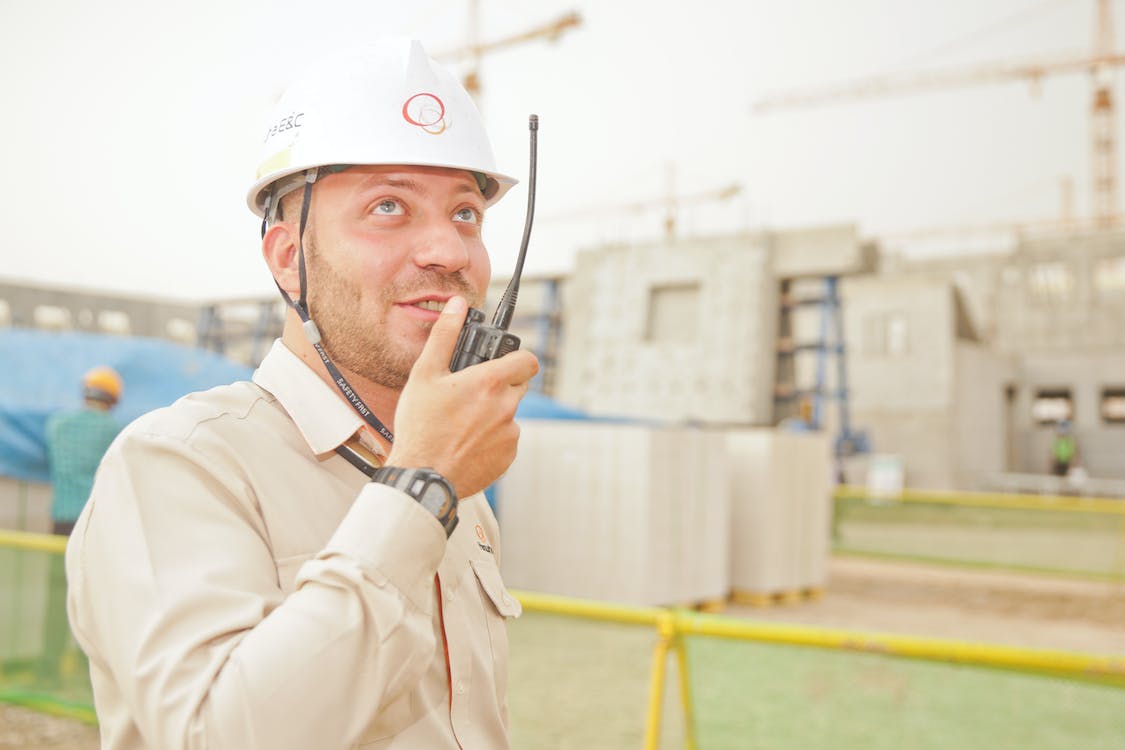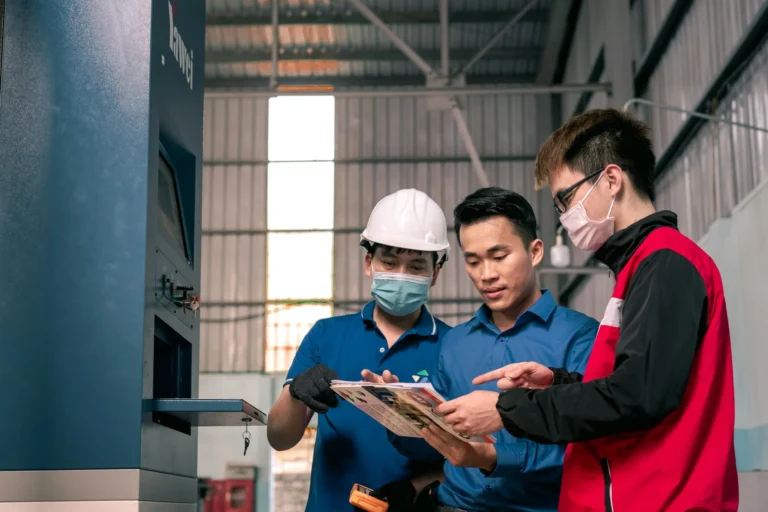Safety within the construction industry is not merely a compliance requirement; it’s a cornerstone for ensuring the well-being of workers and the success of projects. In Australia, a nation known for its robust construction sector, stringent safety standards play a pivotal role in shaping the industry’s landscape. These standards are designed to safeguard workers, mitigate risks, and create a culture of safety that permeates every facet of construction activities.

The Importance of Safety Standards
Construction sites, characterised by their bustling activity and multifaceted operations, encapsulate a myriad of potential hazards that pose significant threats to the well-being of workers. The intricate nature of construction work introduces a spectrum of risks that permeate various facets of the job. From the dizzying heights of scaffoldings and cranes to the intricate operation of heavy machinery and the handling of hazardous materials, each task is accompanied by its own set of potential dangers. Moreover, navigating through ever-changing and challenging conditions, such as fluctuating weather patterns or uneven terrains, further compounds the risks inherent in construction environments.
The amalgamation of these multifarious risks underscores the complexity and diversity of safety concerns within construction sites. Safety standards, therefore, play a multifaceted role as a comprehensive and evolving framework aimed not only at addressing these multifaceted risks but also at cultivating a culture of vigilance and preparedness. Their overarching goal extends beyond mere accident prevention; they serve as guardians against unforeseen incidents, striving to safeguard the lives and well-being of workers, mitigating injuries, and ultimately preventing fatalities.
Regulatory Framework
Australia boasts a comprehensive and meticulously structured regulatory apparatus that serves as a bulwark for ensuring safety within the construction sector. At the crux of this regulatory framework lies the pivotal Work Health and Safety Act 2011, a legislative cornerstone meticulously designed to delineate the legal obligations and responsibilities integral to fostering a safe and secure working environment.
This act stands as a beacon guiding the conduct and practices across various industries, with a particular emphasis on construction, where the complexities and challenges are diverse and multifaceted. The Act serves as an overarching umbrella, encompassing a myriad of provisions and guidelines meticulously crafted to ensure the physical and mental well-being of workers amidst the dynamic and often hazardous conditions prevalent on construction sites. Its comprehensive nature goes beyond a mere regulatory mandate; it embodies a collaborative ethos, emphasising shared responsibility among employers, contractors, and workers.
This collaborative approach forms the bedrock of a collective commitment to health and safety, fostering an environment where stakeholders actively engage in cohesive risk management practices. Employers, contractors, and workers operate within a symbiotic relationship, jointly shouldering the responsibility for identifying, assessing, and mitigating risks, thereby fostering a culture of collective vigilance and proactive risk management across the construction landscape.
Key Safety Standards and Practices
Risk Assessment and Management:
The process of risk assessment and management within the construction industry constitutes a meticulous and multifaceted approach that serves as a linchpin for ensuring the safety and success of any project. Before the commencement of any construction endeavour, a comprehensive risk assessment unfolds, encompassing a rigorous examination of the multifarious potential hazards that may lurk within the project’s scope.
This exhaustive evaluation casts a wide net, delving into various dimensions including but not limited to site-specific challenges, environmental considerations, logistical intricacies, workforce capabilities, and material complexities. The aim is not merely to identify obvious dangers but to delve deeper into nuanced and latent risks that may surface throughout the project lifecycle. Once these risks are meticulously identified, the subsequent phase involves the formulation of mitigation strategies, a process that demands ingenuity, foresight, and expertise.
These strategies aren’t just reactionary measures; they are proactive interventions meticulously crafted to preemptively address and manage risks as they unfold, ensuring a resilient shield against potential pitfalls. The implementation of these strategies transcends mere risk aversion; it’s a dynamic and fluid process that adapts and evolves in tandem with the project’s progression. It involves continuous monitoring, reassessment, and recalibration, ensuring that risk management remains an ongoing and integral aspect throughout the project’s lifecycle.
This comprehensive approach to risk assessment and management serves as a robust framework that not only safeguards against potential hazards but also fosters an environment where proactive risk mitigation becomes an intrinsic part of the construction culture, ensuring smoother project execution, worker safety, and project success.
Personal Protective Equipment (PPE):
The mandate for utilising adequate Personal Protective Equipment (PPE) within construction sites stands as an indispensable pillar in ensuring the safety and well-being of workers amidst the myriad of potential workplace hazards. This stringent requirement encompasses a diverse array of protective gear meticulously designed to mitigate risks and shield workers from the multifaceted dangers prevalent within construction environments. The gamut of PPE extends far beyond mere compliance; it embodies a multifaceted defence system catering to the diverse hazards encountered in construction settings.
Among these essential protective gears, the stalwart hard hats stand as the first line of defence, shielding workers from falling objects and potential head injuries. High-visibility clothing serves not only as a safety measure but also as a visual indicator, ensuring workers’ visibility amidst the bustling activities on-site, thereby preventing collisions and accidents. Safety goggles, an indispensable component, safeguard the eyes against airborne debris, chemical splashes, and other ocular hazards prevalent in construction tasks.
Furthermore, the protective gloves provide a crucial barrier against cuts, abrasions, and chemical exposure, preserving workers’ dexterity while shielding their hands from potential injuries. Complementing these, the resilient steel-toe boots form a robust foundation, safeguarding the feet against impact, crushing, and puncture hazards, thus ensuring stability and protection for workers navigating through dynamic and often perilous terrains.
These examples merely scratch the surface of the extensive range of PPE, highlighting the multifaceted layers of protection meticulously orchestrated to fortify workers against the diverse and multifarious risks encountered within the dynamic construction landscape.

Safe Work Method Statements (SWMS): These documents outline the high-risk construction work to be performed, associated hazards, and control measures to mitigate those risks. SWMS ensure that workers are informed about potential dangers and the necessary precautions to take.
Training and Education: Regular training programs are conducted to educate workers about safety protocols, emergency procedures, proper equipment handling, and hazard recognition. This empowers workers to make informed decisions and contributes to a safety-conscious work culture.
Challenges in Ensuring Safety
Despite stringent safety standards, the construction industry grapples with challenges that pose risks to workplace welfare:
Complacency: Over time, workers may become complacent or overlook safety protocols, leading to potential lapses in adherence to safety standards.
High-Risk Activities: Certain construction tasks, such as working at heights, handling heavy machinery, and exposure to hazardous materials, inherently pose higher risks, demanding heightened vigilance and adherence to safety protocols.
Tight Deadlines and Budget Constraints: Pressures to meet tight project deadlines and budget constraints can sometimes compromise safety as shortcuts may be considered, increasing the likelihood of accidents.
Innovations in Safety
The construction industry continually embraces innovations aimed at enhancing safety:
Technology Integration: Advancements in technology, such as drones for site inspections, Building Information Modeling (BIM) for planning, and wearable devices that monitor workers’ health and safety, are revolutionising safety practices.
Prefabrication and Modular Construction: Off-site fabrication of building components and modular construction methods reduce on-site risks and enhance safety by minimising exposure to hazards.
Impact on Workplace Welfare
Prioritising safety standards in construction directly correlates with improved workplace welfare:
Reduced Accidents and Injuries: Adherence to stringent safety standards significantly reduces the occurrence of workplace accidents and injuries, ensuring the physical well-being of workers.
Enhanced Productivity: A safe working environment fosters a sense of security and focus among workers, leading to increased productivity and efficiency on construction sites.
Employee Retention and Morale: Prioritising safety demonstrates a commitment to workers’ welfare, fostering a positive work environment that boosts morale and encourages employee retention.
The Future of Safety Standards in Australian Construction
The evolution of safety standards in the construction industry is an ongoing journey. As technology, materials, and methodologies advance, safety standards will continue to adapt and evolve. Embracing a proactive approach to safety by integrating technological innovations, providing comprehensive training, and fostering a culture of continuous improvement will be pivotal in shaping the future of workplace welfare in Australian construction.
Safety standards in Australian construction are not merely regulatory measures; they form the bedrock of a culture that prioritises the welfare of workers. From regulatory frameworks to innovative practices, the commitment to safety is evident across the industry. Upholding stringent safety standards not only prevents accidents and injuries but also enhances workplace morale, productivity, and employee retention. As the construction landscape evolves, an unwavering dedication to safety will remain integral, ensuring a safer and more secure environment for all those involved in shaping Australia’s built environment.
A good construction software makes use of good project management functionality, estimate and financial/accounting tool functionality, job management, scheduling and planning and support functionalities and more. WunderBuild is a construction management software that aims to provide all of these functionalities and more to bring out the best outcomes for a project. Enquire here today, to learn more about Wunderbuild and start your free trial.




